Books by Rachele Dubbini
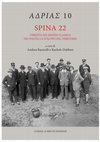
https://www.lerma.it/libro/9788891327543, 2024
The importance of the past as a fundamental tool for understanding the present has long been clea... more The importance of the past as a fundamental tool for understanding the present has long been clear. For this reason, it seems necessary to take advantage of every opportunity, such as that offered by the centenary of the discovery of the Etruscan necropolis of Spina, to enrich the reflection on the many interrelations between the classical world and the contemporary. That is what this volume aims at, intentionally articulated on different research levels. Recalling the importance of History and Archaeology, disciplines that lay at the basis of the Italian colonial vision, from the late 19th century to Republican times, the contributions offer the reader a rich contextualisation of the sedimentation process of the myth of Spina. A path lasting centuries, including contributions from literature, poetry and the figurative arts. But the volume also intends to be a historical reconstruction of the multiplicity of repercussions that the Spina myth had, in terms of territorial organization and management of cultural policies, on the city of Ferrara: an important legacy, capable of making its effects felt in the present, not only regarding the city’s intense activity as a pole of aggregation of local energies, but also because of the crucial nature of that past as a stumbling block placed upon the path of our frenetic contemporary societies.
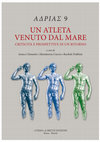
ADRIAS 9, 2023
In 1964 fishermen from the Italian city of Fano raised from the sea bottom an ancient bronze stat... more In 1964 fishermen from the Italian city of Fano raised from the sea bottom an ancient bronze statue: the copy of a Greek artisan who was meticulous reproducing a renown work in the Roman world? Or was it Lysippos’ original work, taken into Italy by the Roman conquerors? The fact is, this is a piece of universal cultural value, of which the fierce quarrel over its ownership is being currently disputed between Italy and the United States; while the memory of its discovery and ties to the Adriatic Sea have made it a solid part of Fano’s cultural heritage. This Athlete statue coming from the sea is called “the Lysippos”, the “Atleta di Fano”, “the Getty Bronze”, and the more neutral title: “the Victorious Youth”. Such as its many names, so are the numerous unsolved questions about this work of art. This volume hosts an interdisciplinary debate among experts addressing the legal issues around it, its conservation and valorisation, its relationship with Adriatic area and with the communities who retain it their rightful heritage, and the topic of the circulation of Greek works of art in the Roman world. The objective of such a debate is to bring into the public spotlight the possibilities and difficulties involved in an eventual return of the statue to Italy from the Getty Museum, a return now past due for a long time.
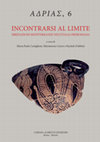
Il volume ospita gli atti del convegno internazionale Incontrarsi al limite. Ibridazioni mediterr... more Il volume ospita gli atti del convegno internazionale Incontrarsi al limite. Ibridazioni mediterranee nellItalia preromana, tenutosi a Ferrara dal 6 all8 giugno 2019 e dedicato a un filone di ricerca, i confini nel mondo classico, estremamente promettente per la comprensione dei processi di definizione degli spazi socio-economici e culturali in epoca antica. Il tema è affrontato in una prospettiva interpretativa che vede le aree liminali come sistemi aperti, di passaggio e quindi di contatto tra realtà diverse, di incontri avvenuti in luoghi essenzialmente fluidi che portano allo sviluppo di relazioni nuove e inedite e quindi di ibridazioni. Obiettivo del lavoro era ampliare il dibattito storiografico già avviato nel corso del 54 Convegno di Studi sulla Magna Grecia (Ibridazione ed integrazione in Magna Grecia. Forme, modelli, dinamiche) ai contesti tirrenico e soprattutto adriatico dellItalia preromana, aree queste in cui lo sviluppo della cultura greca non avvenne secondo il modello poleico, consentendo così di focalizzare maggiormente lattenzione sui fenomeni di mobilità, fluidità e molteplicità di individui, risorse, pratiche e idee che coinvolsero tutto il Mediterraneo antico.
The volume hosts the proceedings of the international conference "Meeting at the Limit: Mediterranean Hybridizations in Pre-Roman Italy", which was held in Ferrara during the 6th through the 8th of June 2019. The conference was dedicated to the specific research theme of borders in the classical world, which is extremely promising for the understanding of the processes of definition of socio-economic and cultural spaces in ancient times. The theme is addressed in an interpretative perspective that sees the liminal areas as open systems of passage and therefore of contact between different realities; of encounters in essentially fluid places that lead to the development of new and unprecedented relationships and therefore of hybridizations. The aim of the work was to widen the historiographical debate already started during the 54th Magna Graecia Study Conference (Hybridization and integration in Magna Graecia: Shapes, models, dynamics) to the Tyrrhenian and especially Adriatic contexts of pre-Roman Italy, areas where the development of Greek culture did not take place according to the poleic model, thus allowing to focus more attention on the phenomena of mobility, fluidity and multiplicity of individuals, resources, practices, and ideas that involved the whole ancient Mediterranean.
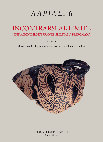
Il volume ospita gli atti del convegno internazionale "Incontrarsi al limite. Ibridazioni mediter... more Il volume ospita gli atti del convegno internazionale "Incontrarsi al limite. Ibridazioni mediterranee nell' Italia preromana", tenutosi a Ferrara dal 6 all' 8 giugno 2019 e dedicato a un filone di ricerca, i confini nel mondo classico, estremamente promettente per la comprensione dei processi di definizione degli spazi socio-economici e culturali in epoca antica. Il tema è affrontato in una prospettiva interpretativa che vede le aree liminali come sistemi aperti, di passaggio e quindi di contatto tra realtà diverse, di incontri avvenuti in luoghi essenzialmente fluidi che portano allo sviluppo di relazioni nuove e inedite e quindi di ibridazioni. Obiettivo del lavoro era ampliare il dibattito storiografico già avviato nel corso del 54 Convegno di Studi sulla Magna Grecia ("Ibridazione ed integrazione in Magna Grecia. Forme, modelli, dinamiche") ai contesti tirrenico e soprattutto adriatico dell' Italia preromana, aree queste in cui lo sviluppo della cultura greca non avvenne secondo il modello poleico, consentendo così di focalizzare maggiormente l' attenzione sui fenomeni di mobilità, fluidità e molteplicità di individui, risorse, pratiche e idee che coinvolsero tutto il Mediterraneo antico.
The volume hosts the proceedings of the international conference "Meeting at the Limit: Mediterranean Hybridizations in Pre-Roman Italy", which was held in Ferrara during the 6th through the 8th of June 2019. The conference was dedicated to the specific research theme of borders in the classical world, which is extremely promising for the understanding of the processes of definition of socio-economic and cultural spaces in ancient times. The theme is addressed in an interpretative perspective that sees the liminal areas as open systems of passage and therefore of contact between different realities; of encounters in essentially fluid places that lead to the development of new and unprecedented relationships and therefore of hybridizations. The aim of the work was to widen the historiographical debate already started during the 54th Magna Graecia Study Conference (Hybridization and integration in Magna Graecia: Shapes, models, dynamics) to the Tyrrhenian and especially Adriatic contexts of pre-Roman Italy, areas where the development of Greek culture did not take place according to the poleic model, thus allowing to focus more attention on the phenomena of mobility, fluidity and multiplicity of individuals, resources, practices, and ideas that involved the whole ancient Mediterranean.

Ragionare sui confini -in senso fisico e metaforico- è quanto mai necessario in una società globa... more Ragionare sui confini -in senso fisico e metaforico- è quanto mai necessario in una società globale che deve bilanciarsi tra diverse realtà culturali e tensioni identitarie: il valore ambiguo del confine, nella sua duplice funzione di barriera e di soglia, evidenzia un momento critico tanto nell’organizzazione spaziale quanto nella definizione delle identità. I Romani d’altronde sembrano ossessionati dai confini, come dimostra l’importanza che le fonti storiche attribuiscono ai limiti di una città i cui confini possono muoversi in una sola direzione, cioè verso l’esterno, e che nei secoli ingrandisce il suo potere tanto da arrivare a non conoscere più limiti. Il volume affronta il tema con un approccio interdisciplinare, che va da una lettura teorico-demografica alla prospettiva storico-religiosa e antropologica e alla questione giuridica, senza dimenticare l’aspetto urbanistico, topografico ed epigrafico, gli indizi archeologici e i contesti paesaggistici di riferimento. Si tratta di una riflessione a più voci che desidera sottoporre nuove questioni, proponendo spunti interpretativi originali al fine di aprire prospettive inedite di ricerca.
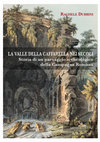
Situated in the south-eastern suburbs of Rome, between the Via Latina and Via Appia antica, the C... more Situated in the south-eastern suburbs of Rome, between the Via Latina and Via Appia antica, the Caffarella valley forms part of the Appia Antica archaeological park. The constitution of a public park that would include the valley began amidst debates on the creation of the Appia Antica Park in the 1950s. The Caffarella Park was ultimately created in 2005 thanks to the joint efforts of citizens and institutions. However, various important areas have not yet been annexed and are therefore at the mercy of inconsiderate actions by private citizens. In this regard, the future of the Park remains undetermined.
This book, which ties into on-going discussions on the need to defend and promote the area, starts by asking some fundamental questions to reflect on the way in which both material and immaterial heritage can be democratically shared in Italy: what was the driving force behind decades of battles to make this space accessible to the public? why is this space so important to society? In what lies its value?
To address these issues, the cultural process underlying the development of a collective memory of the Caffarella will be investigated and contrasted with the notion of Antiquity that characterizes this archaeological site. The different meanings attached to the monuments and landscape of the valley over the centuries are analysed in the belief that value can be assigned only to what is recognized. Starting with its ancient roots, the many stories of the Caffarella are told in order to depict the landscapes created by human hands and minds over time.

According to the most recent studies, the boundary of the ager romanus antiquus coincides with th... more According to the most recent studies, the boundary of the ager romanus antiquus coincides with the first-mile ring, or rather, one thousand paces from the Servian walls. So far, research on the borders of Rome, which has been mostly historical or historical-religious in nature, has focused on trying to find one, unified response to all the questions concerning the ancients’ conception of Rome, both as an inhabited center and a power, and, therefore, on the expansion of the Urbs and its territorium, together forming precisely the ager romanus.
What is lacking, is a substantial, overall review of all the evidence available to us on this topic using an innovative approach that allows us to overcome typically dichotomous concepts (center-suburbs) as well as models of the area as a series of concentric rings in favor of a more holistic view of the territory. In other words, a historical synthesis has yet to be followed up by a systematic archeological study providing a complete picture of the problem. Therefore, the most recent studies convey a sense of the urgent need to overhaul the entire issue, a task that is complex and, in the future, would require the development of a research project that is far broader ranging and articulated than a monographic study.
Considering the most recent interpretive paradigms, the aim of this study is to continue research on the urban border spaces of Rome, especially by testing the meaning of the border landscape at the first mile, from the origins of the inhabited area to the building of the Aurelian wall, which, since the last quarter of the 3rd century AD, created a break between the city and the countryside. Therefore, only one specific area of the band of land located at the outer limits of the first mile of the city was systematically examined: the Almone Valley. This valley lies between the first and second mile of Via Appia, one of the main roadways in Rome, and—at least starting during the late Roman Republic—must have constituted the boundary of the urban area of Rome (the so-called continentia tecta) and, therefore, of the Augustan prima regio and the Urbs. From a strictly archeological point of view, despite the immense cultural significance that has always been universally attributed to the area crossed by Via Appia, the evidence needed to reconstruct the ancient landscape of the Almone Valley is actually rather scarce, which is all the more surprising if one considers that scholars of antiquity of any period have always been fascinated by the templum Martis.
In this perspective, the overall aim of this study, which certainly makes no claims of being exhaustive on the topic and area studied, is actually to re-open the debate on a suburban area which, when compared to its immense cultural potential, has not been given the right amount of attention by scholars and public administrators, with the result of adding another piece – however small – to the history of the urban formation of Rome.
Papers by Rachele Dubbini
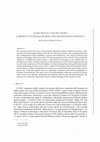
SPINA 22. L' eredità del mondo classico, tra politica e sviluppo del territorio, 2024
The centenary of the discovery on the ground of material evidence of Spina's existence, 2022 was ... more The centenary of the discovery on the ground of material evidence of Spina's existence, 2022 was the year of this famous Etruscan-Greek city. On such occasion, various public institutions thus collaborated to hold exhibitions, lectures and conferences. The section of History and Science of Antiquity of the University of Ferrara organized on June 10 and 11 the conference "Spina 22. L'eredità del mondo classico," with the aim of focusing on the cultural value of the Spina site within a broader discourse on the political use of the classical past in Italy and its role in the construction of local identities. In short, through the echoing of the Spina myth and the archaeological discovery of 1922, via the 1935 opening of the Archaeological Museum in Ferrara, a unique relationship was created over time between the ancient and contemporary city; a link that needed, however, especially in relation to the fascist propaganda, to be better contextualized. This gave rise to an interdisciplinary reflection, necessary to foster, with a view to the culturally sustainable development of the Ferrara and Delta territories, the creation of a conscious relationship with the cultural heritage of the classical world.
HAL (Le Centre pour la Communication Scientifique Directe), 2019
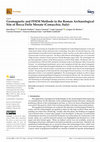
Heritage
The increasing use of geophysical investigations for archaeological purposes is now provided also... more The increasing use of geophysical investigations for archaeological purposes is now provided also by Italian reforms about preventive archaeology. They allow not only the discovery or the spatial definition of possible buried archaeological evidence, but they are also able to define the state of preservation of ancient structures. The Bocca delle Menate archaeological site is in Comacchio village territory, situated in Ferrara provence (Emilia Romagna region, Italy). The archeological site provides important evidence of the Roman presence in the Po Delta (Italy). The Roman villa was excavated between 1958 and 1959, during the reclaiming works in the Mezzano Valley (Comacchio, Ferrara). An archaeological preliminary survey and a geophysical field trip using Geomagnetic and Frequency Domain Electromagnetic Methods were carried out, following the aim to identify the planimetry of the villa previously excavated and eventually newly discovered archaeological remains. The geomagnetic resu...
Journal of Physics: Conference Series
The Bocca delle Menate archaeological site is located in Comacchio town (FE) and provides importa... more The Bocca delle Menate archaeological site is located in Comacchio town (FE) and provides important evidence of the Roman presence in the Po Delta (Italy). The excavations realized sixty years ago have confirmed the presence of an extensive Roman villa and some part of it was highlighted. With the aim to identify the villa plan and the old highlighted archaeological remains, an archaeological preliminary survey and a geomagnetic geophysical campaign were carried out in October 2020. Although geophysical methods are now considered the best tools for archaeological detections, our results show that they are also excellent tools for the preservation, protection and monitoring of the excavated archaeological heritage.
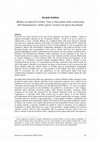
From the very initial versions of the saga of the Argonauts, the figure of Medea – bearer of supe... more From the very initial versions of the saga of the Argonauts, the figure of Medea – bearer of superior knowledge expressed in her exceptional intellect – seems to be just as much of a cultural hero as Jason. Actually, Medea was a mythical figure with great expressive potential who must have caught the attention of the rulers of Corinth, which since the mid-8th century BC had been experiencing incessant growth in terms of urban planning as well as production and commerce. Indeed, this development, traditionally attributed to the political activities of the Bacchiad dynasty, also corresponded to their need to address their lack of a glorious local tradition highlighting Corinth’s independent and prestigious ancestry already in mythical times. Therefore, the Bacchiad poet Eumelus, while composing an epic dedicated to the story of Corinth starting from its origins, traced the saga of the Argonauts and the character Medea back to Corinth, adapting it to local political needs. By moving be...
Collana di studi storici, archeologici e antropologici del mondo antico con un focus sul contesto... more Collana di studi storici, archeologici e antropologici del mondo antico con un focus sul contesto e sui paesaggi dell'Adriatico

IL PONTE PERFETTO 2000 anni di storia del Ponte di Augusto e di Tiberio, 2022
Gli studi passati avevano individuato nella decorazione figurata del pon- te di Rimini i simboli ... more Gli studi passati avevano individuato nella decorazione figurata del pon- te di Rimini i simboli del potere augusteo: la pietas indicata dagli strumenti del culto, gli incarichi sacerdotali del princeps e gli emblemi del suo valore in campo militare e civico. Un riesame più dettagliato degli oggetti rappresentati, l’analisi del significato culturale del ponte nel mondo antico e delle procedure necessarie affinché tale struttura architettonica passasse dallo stato di cantiere a quello di monumento pubblico ha piuttosto evidenziato come gli oggetti raffigurati sulle arcate laterali rimandassero alle attività rituali svolte per assi- curarsi la benevolenza delle forze divine ed extraumane legate alle acque e l’al- lontanamento di ogni influsso maligno o negativo che potesse mettere a rischio per il futuro il mantenimento dell’integrità del ponte.
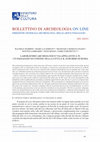
BOLLETTINO DI ARCHEOLOGIA ON LINE DIREZIONE GENERALE ARCHEOLOGIA, BELLE ARTI E PAESAGGIO, 2023
The archaeological laboratory of the University of Ferrara, which is in the first extra-urban str... more The archaeological laboratory of the University of Ferrara, which is in the first extra-urban stretch of the ancient via Appia at the so-called tomb of Geta, investigates a crucial area of passage between the ancient city of Rome and its cultivated territory. The area was connoted with a religious and mythical sense in antiquity, but, at the same time, it is still unknown from an archaeological point of view. In any case, the laboratory does not have exclusively scientific purposes: the excavation site is deeply linked to the socio-political dynamics that characterise the area – which is currently in a heavy state of degradation aggravated by the illegal occupation of public plots of land – and is part of a wider project aimed at regenerating the urban area. In this sense, the active participation of the inhabitants of the neighbourhoods gravitating around the Appia Park becomes the key to a process of shared value assignment between archaeology and local communities. This participation is stimulated through social surveys and an unconventional enhancement of the site, through architectural and artistic planning dedicated to the area. The goal is the creation of a ‘heritage community’ directly involved in the processes of transformation, as well as in the planning and protection of an area that has remained too long forgotten. The first excavation campaign, which was designed based on the results of previous geophysical investigations, conducted with geomagnetic and ground penetrating radar instruments, brought to light a multi-layered burial context from the imperial era, with great archaeological potential.
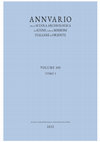
ASAtene, 2023
In the context of the historical events that saw the outbreak of the Italo-Hellenic conflict and ... more In the context of the historical events that saw the outbreak of the Italo-Hellenic conflict and the construction of a specific Italian imaginary concerning the Greek world, this contribution intends to investigate the political role of the Italian Archaeological School at Athens. If in 1939, with the renewal of the friendship treaty between Italy and Greece, the cultural importance of Greece is still recognised in relation to its classical past, with the approach of the Second World War, every argument becomes useful for the denigration of the young state, too aligned with English politics. From this moment onwards, it starts an “anti-Hellenic propaganda campaign”. In this historical context, the activities of Italian institutes in Athens move carefully between the political indications coming from the motherland and the will to continue their cultural mission in Greece. As Emanuele Grazzi is a crucial figure in the diplomatic relations between the two nations, in the same way, Guido Libertini works hard as director of the Italian School and Cultural Institute, distinguishing himself for his managerial activities. Despite the dramatic historical events, these protagonists carry out their mission, being able to move between different institutions and in a social context that has as its backdrop the most refined clubs, cafes, and hotels in Athens of the time.
Un Atleta venuto dal mare. Criticità e prospettive di un ritorno, 2023
The paper recalls the evenements of the discovery of the statue of the Victorious Youth in open s... more The paper recalls the evenements of the discovery of the statue of the Victorious Youth in open sea not far from the Italian coastline of the region Marche at the beginning of the Sixties. It also provides a synthesis of the several hypothesis on the major historical-archaeological and historical-artistical issues concerning the artwork. In particular, the paper goes through the many unanswered questions about the statues’ archaeological context of recovery, its production process, its dating, the original context in which the artwork was exhibited, and finally the spoliation dynamics related to the statue’s transport and loss at sea during Antiquity.

ΤΑΞΙΔΙΑ Scritti per Fede Berti, 2022
Nella sua ricchissima produzione scientifica, Fede Berti ha curato – tra le altre cose – lo studi... more Nella sua ricchissima produzione scientifica, Fede Berti ha curato – tra le altre cose – lo studio della raccolta archeologica conservata presso la casa museo di Remo Brindisi a Comacchio: una collezione composta da una cinquantina di oggetti antichi (o presunti tali) che l’artista esponeva in un armadio-vetrina, accanto alla ben più amata collezione di giocattoli meccanici. Rispetto a quest’ultima, infatti, la collezione archeologica non venne rielaborata in alcun modo – se non per il fissaggio di alcuni oggetti in metallo e del ritratto su un supporto in legno che si andrà a trattare– né la vetrina in cui era esposta disponeva di un’illuminazione propria, facendo ritenere che la raccolta non fosse al centro degli interessi di Brindisi.Nella raccolta, composta essenzialmente da ceramica, da un paio di esemplari di coroplastica votiva di dubbia produzione e datazione e da oggetti vari in metallo (anse, anelli, un asse tardo repubblicano…) spiccano due thymiateria in bronzo di epoca ellenistica e un ritratto maschile in marmo, di piccole dimensioni, che hanno suscitato in Fede Berti «stupore e interesse» per la loro «singolarità o rarità». La sincera passione per
la conoscenza di Fede è d’altronde universalmente nota: con questo contributo si intende rispondere alla sua vivace curiosità con l’approfondimento dello studio di uno dei pezzi che l’hanno particolarmente colpita, proponendo la rilettura del piccolo ritratto di epoca imperiale alla luce dei più recenti approcci interpretativi sulla ritrattistica romana.

Il Convegno, tenuto presso l’Università di Ferrara (Palazzo Bevilacqua-Costabili) e il Museo arch... more Il Convegno, tenuto presso l’Università di Ferrara (Palazzo Bevilacqua-Costabili) e il Museo archeologico nazionale di Ferrara (Palazzo Costabili) è stato organizzato da Maria Paola Castiglioni (Università Grenoble-Alpes), Rachele Dubbini e Mariateresa Curcio (Università di Ferrara), e ha riunito storici, archeologi e linguisti intorno al tema dell’incontro, della convivenza, dell’ibridazione tra comunità greche e non greche nel periodo compreso tra l’età arcaica e l’età ellenistica. Tale iniziativa, che ha beneficiato del sostegno dell’Università italo-francese, dell’Ambasciata di Francia, del l’UMR AOrOc e dell’EA LUHCIE, oltre che delle istituzioni d’afferenza delle organizzatrici, nasce dalla volontà di allargare all’area adriatica e tirrenica il dibattito storiografico già avviato nel corso del 54° Convegno di Studi sulla Magna Grecia intitolato Ibridazione ed integrazione in Magna Grecia. Forme, modelli, dinamiche tenutosi a Taranto nel settembre del 2014 e i cui atti sono sta...
Uploads
Books by Rachele Dubbini
The volume hosts the proceedings of the international conference "Meeting at the Limit: Mediterranean Hybridizations in Pre-Roman Italy", which was held in Ferrara during the 6th through the 8th of June 2019. The conference was dedicated to the specific research theme of borders in the classical world, which is extremely promising for the understanding of the processes of definition of socio-economic and cultural spaces in ancient times. The theme is addressed in an interpretative perspective that sees the liminal areas as open systems of passage and therefore of contact between different realities; of encounters in essentially fluid places that lead to the development of new and unprecedented relationships and therefore of hybridizations. The aim of the work was to widen the historiographical debate already started during the 54th Magna Graecia Study Conference (Hybridization and integration in Magna Graecia: Shapes, models, dynamics) to the Tyrrhenian and especially Adriatic contexts of pre-Roman Italy, areas where the development of Greek culture did not take place according to the poleic model, thus allowing to focus more attention on the phenomena of mobility, fluidity and multiplicity of individuals, resources, practices, and ideas that involved the whole ancient Mediterranean.
The volume hosts the proceedings of the international conference "Meeting at the Limit: Mediterranean Hybridizations in Pre-Roman Italy", which was held in Ferrara during the 6th through the 8th of June 2019. The conference was dedicated to the specific research theme of borders in the classical world, which is extremely promising for the understanding of the processes of definition of socio-economic and cultural spaces in ancient times. The theme is addressed in an interpretative perspective that sees the liminal areas as open systems of passage and therefore of contact between different realities; of encounters in essentially fluid places that lead to the development of new and unprecedented relationships and therefore of hybridizations. The aim of the work was to widen the historiographical debate already started during the 54th Magna Graecia Study Conference (Hybridization and integration in Magna Graecia: Shapes, models, dynamics) to the Tyrrhenian and especially Adriatic contexts of pre-Roman Italy, areas where the development of Greek culture did not take place according to the poleic model, thus allowing to focus more attention on the phenomena of mobility, fluidity and multiplicity of individuals, resources, practices, and ideas that involved the whole ancient Mediterranean.
This book, which ties into on-going discussions on the need to defend and promote the area, starts by asking some fundamental questions to reflect on the way in which both material and immaterial heritage can be democratically shared in Italy: what was the driving force behind decades of battles to make this space accessible to the public? why is this space so important to society? In what lies its value?
To address these issues, the cultural process underlying the development of a collective memory of the Caffarella will be investigated and contrasted with the notion of Antiquity that characterizes this archaeological site. The different meanings attached to the monuments and landscape of the valley over the centuries are analysed in the belief that value can be assigned only to what is recognized. Starting with its ancient roots, the many stories of the Caffarella are told in order to depict the landscapes created by human hands and minds over time.
What is lacking, is a substantial, overall review of all the evidence available to us on this topic using an innovative approach that allows us to overcome typically dichotomous concepts (center-suburbs) as well as models of the area as a series of concentric rings in favor of a more holistic view of the territory. In other words, a historical synthesis has yet to be followed up by a systematic archeological study providing a complete picture of the problem. Therefore, the most recent studies convey a sense of the urgent need to overhaul the entire issue, a task that is complex and, in the future, would require the development of a research project that is far broader ranging and articulated than a monographic study.
Considering the most recent interpretive paradigms, the aim of this study is to continue research on the urban border spaces of Rome, especially by testing the meaning of the border landscape at the first mile, from the origins of the inhabited area to the building of the Aurelian wall, which, since the last quarter of the 3rd century AD, created a break between the city and the countryside. Therefore, only one specific area of the band of land located at the outer limits of the first mile of the city was systematically examined: the Almone Valley. This valley lies between the first and second mile of Via Appia, one of the main roadways in Rome, and—at least starting during the late Roman Republic—must have constituted the boundary of the urban area of Rome (the so-called continentia tecta) and, therefore, of the Augustan prima regio and the Urbs. From a strictly archeological point of view, despite the immense cultural significance that has always been universally attributed to the area crossed by Via Appia, the evidence needed to reconstruct the ancient landscape of the Almone Valley is actually rather scarce, which is all the more surprising if one considers that scholars of antiquity of any period have always been fascinated by the templum Martis.
In this perspective, the overall aim of this study, which certainly makes no claims of being exhaustive on the topic and area studied, is actually to re-open the debate on a suburban area which, when compared to its immense cultural potential, has not been given the right amount of attention by scholars and public administrators, with the result of adding another piece – however small – to the history of the urban formation of Rome.
Papers by Rachele Dubbini
la conoscenza di Fede è d’altronde universalmente nota: con questo contributo si intende rispondere alla sua vivace curiosità con l’approfondimento dello studio di uno dei pezzi che l’hanno particolarmente colpita, proponendo la rilettura del piccolo ritratto di epoca imperiale alla luce dei più recenti approcci interpretativi sulla ritrattistica romana.
The volume hosts the proceedings of the international conference "Meeting at the Limit: Mediterranean Hybridizations in Pre-Roman Italy", which was held in Ferrara during the 6th through the 8th of June 2019. The conference was dedicated to the specific research theme of borders in the classical world, which is extremely promising for the understanding of the processes of definition of socio-economic and cultural spaces in ancient times. The theme is addressed in an interpretative perspective that sees the liminal areas as open systems of passage and therefore of contact between different realities; of encounters in essentially fluid places that lead to the development of new and unprecedented relationships and therefore of hybridizations. The aim of the work was to widen the historiographical debate already started during the 54th Magna Graecia Study Conference (Hybridization and integration in Magna Graecia: Shapes, models, dynamics) to the Tyrrhenian and especially Adriatic contexts of pre-Roman Italy, areas where the development of Greek culture did not take place according to the poleic model, thus allowing to focus more attention on the phenomena of mobility, fluidity and multiplicity of individuals, resources, practices, and ideas that involved the whole ancient Mediterranean.
The volume hosts the proceedings of the international conference "Meeting at the Limit: Mediterranean Hybridizations in Pre-Roman Italy", which was held in Ferrara during the 6th through the 8th of June 2019. The conference was dedicated to the specific research theme of borders in the classical world, which is extremely promising for the understanding of the processes of definition of socio-economic and cultural spaces in ancient times. The theme is addressed in an interpretative perspective that sees the liminal areas as open systems of passage and therefore of contact between different realities; of encounters in essentially fluid places that lead to the development of new and unprecedented relationships and therefore of hybridizations. The aim of the work was to widen the historiographical debate already started during the 54th Magna Graecia Study Conference (Hybridization and integration in Magna Graecia: Shapes, models, dynamics) to the Tyrrhenian and especially Adriatic contexts of pre-Roman Italy, areas where the development of Greek culture did not take place according to the poleic model, thus allowing to focus more attention on the phenomena of mobility, fluidity and multiplicity of individuals, resources, practices, and ideas that involved the whole ancient Mediterranean.
This book, which ties into on-going discussions on the need to defend and promote the area, starts by asking some fundamental questions to reflect on the way in which both material and immaterial heritage can be democratically shared in Italy: what was the driving force behind decades of battles to make this space accessible to the public? why is this space so important to society? In what lies its value?
To address these issues, the cultural process underlying the development of a collective memory of the Caffarella will be investigated and contrasted with the notion of Antiquity that characterizes this archaeological site. The different meanings attached to the monuments and landscape of the valley over the centuries are analysed in the belief that value can be assigned only to what is recognized. Starting with its ancient roots, the many stories of the Caffarella are told in order to depict the landscapes created by human hands and minds over time.
What is lacking, is a substantial, overall review of all the evidence available to us on this topic using an innovative approach that allows us to overcome typically dichotomous concepts (center-suburbs) as well as models of the area as a series of concentric rings in favor of a more holistic view of the territory. In other words, a historical synthesis has yet to be followed up by a systematic archeological study providing a complete picture of the problem. Therefore, the most recent studies convey a sense of the urgent need to overhaul the entire issue, a task that is complex and, in the future, would require the development of a research project that is far broader ranging and articulated than a monographic study.
Considering the most recent interpretive paradigms, the aim of this study is to continue research on the urban border spaces of Rome, especially by testing the meaning of the border landscape at the first mile, from the origins of the inhabited area to the building of the Aurelian wall, which, since the last quarter of the 3rd century AD, created a break between the city and the countryside. Therefore, only one specific area of the band of land located at the outer limits of the first mile of the city was systematically examined: the Almone Valley. This valley lies between the first and second mile of Via Appia, one of the main roadways in Rome, and—at least starting during the late Roman Republic—must have constituted the boundary of the urban area of Rome (the so-called continentia tecta) and, therefore, of the Augustan prima regio and the Urbs. From a strictly archeological point of view, despite the immense cultural significance that has always been universally attributed to the area crossed by Via Appia, the evidence needed to reconstruct the ancient landscape of the Almone Valley is actually rather scarce, which is all the more surprising if one considers that scholars of antiquity of any period have always been fascinated by the templum Martis.
In this perspective, the overall aim of this study, which certainly makes no claims of being exhaustive on the topic and area studied, is actually to re-open the debate on a suburban area which, when compared to its immense cultural potential, has not been given the right amount of attention by scholars and public administrators, with the result of adding another piece – however small – to the history of the urban formation of Rome.
la conoscenza di Fede è d’altronde universalmente nota: con questo contributo si intende rispondere alla sua vivace curiosità con l’approfondimento dello studio di uno dei pezzi che l’hanno particolarmente colpita, proponendo la rilettura del piccolo ritratto di epoca imperiale alla luce dei più recenti approcci interpretativi sulla ritrattistica romana.
in quanto collegamento diretto tra la valle del Tevere e gli abitati dell’area albana, era invece diretta all’area del nemus Aricinum, il santuario di Diana nel territorio di Aricia, tanto che per l’Appia il nome di via diania o via nemorensis è stato recentemente preferito a quello di “via albana”
RELIGIOUS ENTANGLEMENT AND
APPROPRIATION IN URBAN SPACES
5/6 DECEMBER 2022
AUSTRIAN ARCHEOLOGICAL INSTITUTE
LECTURE ROOM, 1ST FLOOR
HOLLANDSTRASSE 11–13, 1020 VIENNA
L’ACQUA DA MODIFICANTE A MODIFICATA II
Roma, 4 novembre 2022
Sala Conferenze della Cartiera Latina - via Appia Antica 42, Roma
SULLA NECESSITÀ DI RICUCIRE LA RELAZIONE TERRITORIALE E CULTURALE TRA UOMO E ACQUA
IN AREE IN CUI È STATA RIDOTTA ALL’INDIFFERENZA. LA RISCOPERTA DOPO LA PANDEMIA
Thursday 12 - Friday 13 May 2022
WORKSHOP OF THE PHD PROGRAMME IN ENVIRONMENTAL SUSTAINABILITY AND WELLBEING
DAY 1 – Thursday 12
UNIVERSITÀ DEGLI STUDI DI FERRARA
Aula Magna IUSS, 2 floor– Palazzo Turchi di Bagno Corso Porta Mare 2
DAY 2 – Friday 13
UNIVERSITÀ DI FERRARA
Aula A5 – Dept. of Economy and Management Via degli Adelardi, 33
Non-urban Religious Spaces in Antiquity
International Workshop, Hamburg (29-30 March 2022)
attention is given to the liminal value of the first mile as a border sign of the urban space of ancient Rome, presenting the written sources which allude to the juridical and administrative functions of this space marker and the new archaeological evidence on the circuit of sanctuaries which defined this critical area.
12 -14 DICEMBRE 2019
FERRARA VII CONVEGNO NAZIONALE SOCIETÀ ITALIANA DI ANTROPOLOGIA APPLICATA
12 dicembre: Città culturali. Prospettive etnografiche tra archeologia e arte contemporanea
Cogliendo l’occasione dai recenti provvedimenti legislativi, è tempo di fare chiarezza sulle dinamiche in atto, offrendo spunti di dibattito e sollecitazioni concrete per definire orizzonti condivisi sui ruoli e i compiti che attendono il museo contemporaneo, inteso come luogo di promozione della conoscenza e della cultura, di coesione sociale, di costruzione del pensiero critico e del benessere della comunità.
In questo senso le esperienze di gestione dei musei e le riflessioni maturate in seno ad ANMLI come espressione della consolidata tradizione del museo territoriale, si propongono di sollecitare un ampio confronto su quanto è necessario per alimentare, nel segno della sostenibilità e del rispetto delle peculiarità, un sistema museale di relazione, dialogante e solidale.
Lunedì 14 maggio ore 18, Università di Roma La Sapienza, Facoltà di Lettere e Filosofia, Aula I
The amount of the bursary is 200 € for Italian applicants and 300 € for international fellows and is intended to cover travel and accommodation costs. Fellows are also expected to participate in the conference workshop on the afternoon of 31 May and the closing dinner with the speakers. The invitation is open to post-graduate students in Archaeology, Ancient History and Anthropology
A partire da una simile riflessione teorica, che segna un punto cardine negli studi sul tema in rapporto all’architettura, il panel intende approfondire l’analisi del ruolo, della funzione e del significato dell’antico, delle tracce monumentali e immateriali del passato, nei processi di
evoluzione dello spazio e del paesaggio urbano in età moderna e contemporanea.
Si suggerisce l’adozione di uno “sguardo” trasversale sulla città, “imprevisto” nel tentativo di muoversi tra archeologia, urbanistica, storia urbana e sociologia della cultura. Con riferimento agli aspetti legati alla memoria collettiva – e ai casi “particolari” di oblio – è possibile mettere a fuoco anche i fenomeni di semantizzazione degli spazi e dei luoghi attraverso i segni di memoria storica.
Quali elementi mostrano gli esiti dei meccanismi selettivi, formali e di senso, sui monumenti e sul passato? Quale valore assumono le tracce dell’antico nella dinamica urbana? Il panel tenta di rispondere a queste domande al fine di comprendere come la città scelga di narrare e ricordare sé stessa e la propria storia, costruendo e trasformando non solo spazi, ma anche forme di memoria culturale.
La sessione, dunque, propone un riesame in prospettiva storica dei seguenti temi, declinabili attraverso l’analisi di casi studio quali, ad esempio, specifici quartieri o aree urbane:
Persistenza e percezione dell’antico nei processi di definizione urbanistica
Cancellazione della memoria dei monumenti antichi nella trasformazione urbana
Archeologia e metamorfosi dello spazio urbano
Citazioni dall’antico nelle forme della città moderna e contemporanea
Semantica dell’antico e percezione dello spazio
Memoria storica e progettazione urbana
Memoria dell’antico ed evoluzione del paesaggio urbano
La città, la storia e la memoria collettiva
Criticità e prospettive di un ritorno
4-5 ottobre 2021 dalle 15 in diretta sul canale YouTube del The Journal of Cultural Heritage Crime
Un’antica statua in bronzo rinvenuta in mare negli anni Sessanta dai pescatori di Fano: la creazione di un artigiano, verosimilmente greco, che in epoca ellenistica imita o copia fedelmente un’opera famosa nel Mediterraneo ormai romanizzato, o forse l’opera originale stessa, creata dalle mani dell’illustre scultore Lisippo per celebrare un atleta vincitore e in seguito razziata dalla Grecia dai conquistatori romani? Di certo siamo di fronte a un bene culturale la cui proprietà è aspramente contesa tra l’Italia e gli Stati Uniti, mentre la memoria del suo rinvenimento e il suo legame con l’Adriatico la rendono parte integrante dell’eredità culturale della città di Fano. Per questi motivi il giovane atleta venuto dal mare è stato denominato “il Lisippo”, “l’Atleta di Fano”, il “Getty Bronze” o ancora, volendo rimanere più neutrali, “l’Atleta vincitore”. Così come i suoi nomi, numerose sono le questioni aperte che riguardano quest’opera scultorea: il convegno, organizzato dalla cattedra di Archeologia Classica dell’Università di Ferrara insieme a The Journal of Cultural Heritage Crime in qualità di media partner e sostenuto dalla liberalità del Pio Sodalizio dei Piceni, intende indagare le diverse sfaccettature del tema in una discussione che vede protagonisti esperti di varie discipline per affrontare insieme la questione giuridica, la conservazione e la valorizzazione del bene, il rapporto con il territorio adriatico e con le comunità che di questo bene si sentono eredi e il tema della circolazione di opere greche nel mondo romano. Al termine del convegno, la tavola rotonda metterà a fuoco possibilità e criticità di un possibile ritorno del pezzo in Italia dal Getty Museum di Los Angeles, ritorno atteso ormai da troppi anni.
Partecipano al convegno: Lorenzo Braccesi (Università degli Studi di Padova); Alessandra Bravi (Università degli Studi della Tuscia), Stefano Bruni (Università degli Studi di Ferrara); Silvia Cecchi (Procura di Pesaro), Lorenzo D’Ascia (Avvocatura Generale dello Stato); Stefano Finocchi (Soprintendenza Archeologia, Belle Arti e Paesaggio Marche), Nicoletta Frapiccini (Museo Archeologico Nazionale delle Marche); Monica Galeotti (MiBACT - Opificio delle Pietre Dure di Firenze), Giuditta Giardini (Columbia Law School), Carmelo Malacrino (Museo di Reggio Calabria); Stefano Marchegiani (Comune di Fano); Stefano Medas (Università Ca’ Foscari di Venezia), Oscar Mei (Università di Urbino), Francesca Morandini (Fondazione Brescia Musei), Anna Patera (MiBACT - Opificio delle Pietre Dure di Firenze), Ludovico Rebaudo (Università degli Studi di Udine), Paolo Salvatori (Comando Carabinieri per la Tutela Patrimonio Culturale), Alessio Sassù (Sapienza Università di Roma), Eike Schmidt (Gallerie degli Uffizi)
Corso di Laurea Magistrale in Quaternario, Preistoria e Archeologia
Insegnamento di Archeologia Classica "Spazi sacri nel mondo classico"
Organizzazione
Clara di Fazio
Università degli Studi di Ferrara
Dipartimento di Studi Umanistici
23, 24, 30 Marzo 2021 27, 28 Aprile 2021
Link: meet.google.com/zu q-tsyt-mds
Palazzo Bevilacqua Costabili, via Voltapaletto 11
For those interested in streaming the conference live, be sure to tune into the conference here:
FIRST DAYì: https://www.youtube.com/watch?v=JRIRk3euzyY
SECOND DAY: https://www.youtube.com/watch?v=ARAL3jfMydM
Kick-off Symposium of the PhD Programme in
ENVIRONMENTAL SUSTAINABILITY AND WELLBEING
Tuesday 5 - Thursday 7 November 2019
Annual Symposium of the
ROUTES TOWARDS SUSTAINABILITY University Network
Friday 8 November 2019
Università degli Studi di Ferrara
Palazzo Turchi di Bagno, Corso Porta Mare 2
Auditorium Santa Lucia, Via Ariosto 35
Vi sarò grato se potrete segnalare l’incontro a quanti ritenete possano essere interessati.
A presto
Info
Email: igorbaglioni79@gmail.com
Call for papers (versione italiana):
https://drive.google.com/file/d/1hjBOCFfLsumjKgo9_QagkNShi8-Rbty_/view?usp=sharing
Call for papers (english version):
https://drive.google.com/file/d/1jvRTOmH8NtRLg66Mq_cOaQbju1ioWfwI/view?usp=sharing
Museo delle Religioni “Raffaele Pettazzoni”
Le 12 Fatiche di Herakles
tra Iconografia e Letteratura
4-5-6-7-8 giugno 2019
Velletri (Roma)
Call for Papers
Oggetto del convegno saranno le attestazioni antiche, letterarie come iconografiche, delle tradizioni riguardanti le 12 Fatiche di Herakles e come queste siano state rielaborate nell’arte e nella letteratura delle epoche seguenti. Nell’insieme, il convegno intende porsi come un’occasione di confronto interdisciplinare che favorisca il dialogo tra i diversi approcci di analisi alla documentazione e le relative discipline: antropologia, archeologia, filologia classica, storia, storia dell’arte, storia della letteratura, storia delle religioni. Una specifica sezione del convegno sarà dedicata al “Sarcofago delle 12 Fatiche di Ercole” conservato presso il Museo Civico-Archeologico “Oreste Nardini” di Velletri.
Comitato Scientifico: Igor Baglioni (Museo delle Religioni “Raffaele Pettazzoni”), Corinne Bonnet (Université Toulouse “Jean Jaurès”), Rachele Dubbini (Università degli Studi di Ferrara), Giuseppe Capriotti (Università degli Studi di Macerata), Andrea Ercolani (Istituto di Studi sul Mediterraneo Antico - Roma), Massimo Fusillo (Università degli Studi dell’Aquila), Claudia Santi (Università degli Studi della Campania “Luigi Vanvitelli”)
Segreteria organizzativa: Igor Baglioni (Museo delle Religioni “Raffaele Pettazzoni”).
Gli studiosi interessati a presentare un contributo possono inviare un abstract di non più di una pagina (max 2.000 battute) al dott. Igor Baglioni (igorbaglioni79@gmail.com) entro e non oltre il giorno 1 aprile 2019.
All’abstract dovranno essere allegati: il titolo del paper; l’area prescelta; una breve nota biografica degli autori; un recapito di posta elettronica; un recapito telefonico.
Le relazioni potranno essere presentate nelle seguenti lingue: francese, inglese, italiano, spagnolo.
L’accettazione dei papers sarà comunicata (via posta elettronica) alle persone interessate entro il 10 aprile 2019.
Entro il 25 maggio 2019 dovrà essere consegnato (sempre in via posta elettronica) il paper corredato da note e bibliografia. La consegna del paper è vincolante per la partecipazione al convegno.
Date da ricordare:
Chiusura call for papers: 1 aprile 2019.
Notifica accettazione paper: 10 aprile 2019.
Consegna paper: 25 maggio 2019.
Convegno: 4-5-6-7-8 giugno 2019
La partecipazione al convegno è gratuita. I relatori residenti fuori la provincia di Roma saranno ospitati nelle strutture convenzionate al Museo delle Religioni “Raffaele Pettazzoni”, usufruendo di una riduzione sul normale prezzo di listino.
È prevista la pubblicazione degli Atti su Religio. Collana di Studi del Museo delle Religioni “Raffaele Pettazzoni” (Edizioni Quasar) e su riviste scientifiche specializzate. Le relazioni da pubblicare saranno oggetto di un peer review finale.
Sono previste visite serali gratuite ai musei e ai monumenti dei comuni di Albano Laziale, Genzano di Roma, Lanuvio, Rocca di Papa e Velletri. Il programma delle visite sarà reso noto contestualmente al programma del convegno.
Per informazioni:
email: igorbaglioni79@gmail.com
- La rivista nasce come iniziativa dell’omonima Sezione di Storia e Scienze dell’Antichità del Dipartimento di Studi Umanistici. Vuole accogliere e valorizzare contributi nelle discipline dei settori storici, intesi in senso lato.
- The magazine was born as an initiative of the homonymous Section of History and Ancient Sciences of the Department of Humanities. It wants to welcome and enhance contributions in the disciplines of the historical sectors, understood in a broad sense.
- Le magazine est né à l'initiative de la section homonyme d'histoire et des sciences anciennes du Département des sciences humaines. Elle veut accueillir et valoriser les apports dans les disciplines des secteurs historiques, entendus au sens large.
- Entstanden ist das Magazin aus einer Initiative der gleichnamigen Sektion für Geschichte und Altertumswissenschaften des Fachbereichs Geisteswissenschaften. Es möchte Beiträge in den Disziplinen der historischen Bereiche im weitesten Sinne willkommen heißen und fördern.
- La revista nació como una iniciativa de la Sección homónima de Historia y Ciencias Antiguas del Departamento de Humanidades. Quiere acoger y potenciar aportes en las disciplinas de los sectores históricos, entendidos en un sentido amplio.